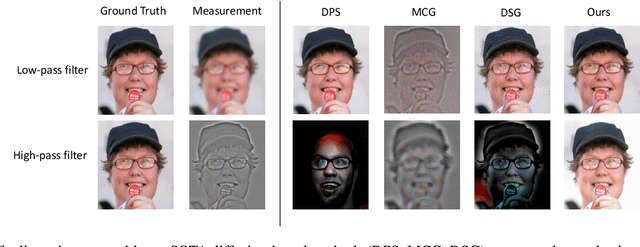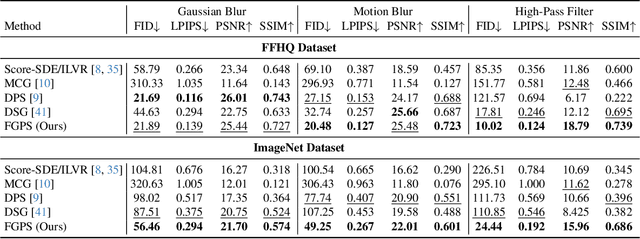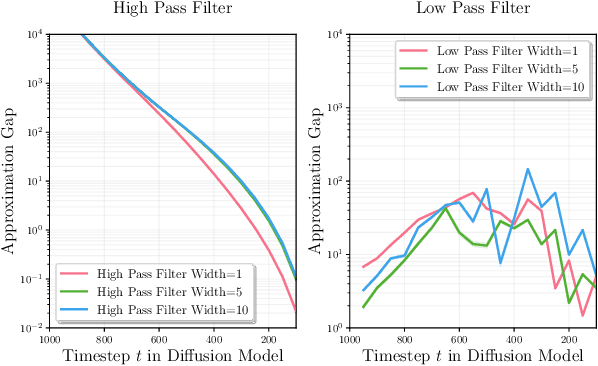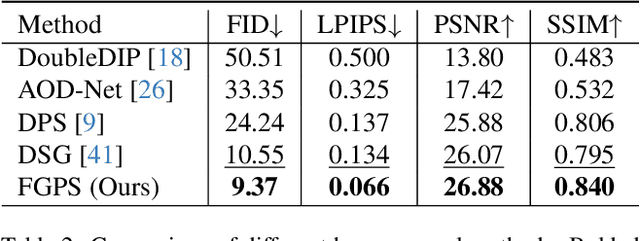Deblurring
Deblurring is a computer-vision task that involves removing the blurring artifacts from images or videos to restore the original, sharp content. Blurring can be caused by various factors such as camera shake, fast motion, and out-of-focus objects, and can result in a loss of detail and quality in the captured images. The goal of deblurring is to produce a clear, high-quality image that accurately represents the original scene.
Papers and Code
Deep priors for satellite image restoration with accurate uncertainties
Dec 05, 2024



Satellite optical images, upon their on-ground receipt, offer a distorted view of the observed scene. Their restoration, classically including denoising, deblurring, and sometimes super-resolution, is required before their exploitation. Moreover, quantifying the uncertainty related to this restoration could be valuable by lowering the risk of hallucination and avoiding propagating these biases in downstream applications. Deep learning methods are now state-of-the-art for satellite image restoration. However, they require to train a specific network for each sensor and they do not provide the associated uncertainties. This paper proposes a generic method involving a single network to restore images from several sensors and a scalable way to derive the uncertainties. We focus on deep regularization (DR) methods, which learn a deep prior on target images before plugging it into a model-based optimization scheme. First, we introduce VBLE-xz, which solves the inverse problem in the latent space of a variational compressive autoencoder, estimating the uncertainty jointly in the latent and in the image spaces. It enables scalable posterior sampling with relevant and calibrated uncertainties. Second, we propose the denoiser-based method SatDPIR, adapted from DPIR, which efficiently computes accurate point estimates. We conduct a comprehensive set of experiments on very high resolution simulated and real Pleiades images, asserting both the performance and robustness of the proposed methods. VBLE-xz and SatDPIR achieve state-of-the-art results compared to direct inversion methods. In particular, VBLE-xz is a scalable method to get realistic posterior samples and accurate uncertainties, while SatDPIR represents a compelling alternative to direct inversion methods when uncertainty quantification is not required.
VISION-XL: High Definition Video Inverse Problem Solver using Latent Image Diffusion Models
Dec 03, 2024In this paper, we propose a novel framework for solving high-definition video inverse problems using latent image diffusion models. Building on recent advancements in spatio-temporal optimization for video inverse problems using image diffusion models, our approach leverages latent-space diffusion models to achieve enhanced video quality and resolution. To address the high computational demands of processing high-resolution frames, we introduce a pseudo-batch consistent sampling strategy, allowing efficient operation on a single GPU. Additionally, to improve temporal consistency, we present batch-consistent inversion, an initialization technique that incorporates informative latents from the measurement frame. By integrating with SDXL, our framework achieves state-of-the-art video reconstruction across a wide range of spatio-temporal inverse problems, including complex combinations of frame averaging and various spatial degradations, such as deblurring, super-resolution, and inpainting. Unlike previous methods, our approach supports multiple aspect ratios (landscape, vertical, and square) and delivers HD-resolution reconstructions (exceeding 1280x720) in under 2.5 minutes on a single NVIDIA 4090 GPU.
Adaptive High-Pass Kernel Prediction for Efficient Video Deblurring
Dec 02, 2024



State-of-the-art video deblurring methods use deep network architectures to recover sharpened video frames. Blurring especially degrades high-frequency (HF) information, yet this aspect is often overlooked by recent models that focus more on enhancing architectural design. Recovering these fine details is challenging, partly due to the spectral bias of neural networks, which are inclined towards learning low-frequency functions. To address this, we enforce explicit network structures to capture the fine details and edges. We dynamically predict adaptive high-pass kernels from a linear combination of high-pass basis kernels to extract high-frequency features. This strategy is highly efficient, resulting in low-memory footprints for training and fast run times for inference, all while achieving state-of-the-art when compared to low-budget models. The code is available at https://github.com/jibo27/AHFNet.
DIVD: Deblurring with Improved Video Diffusion Model
Dec 01, 2024Video deblurring presents a considerable challenge owing to the complexity of blur, which frequently results from a combination of camera shakes, and object motions. In the field of video deblurring, many previous works have primarily concentrated on distortion-based metrics, such as PSNR. However, this approach often results in a weak correlation with human perception and yields reconstructions that lack realism. Diffusion models and video diffusion models have respectively excelled in the fields of image and video generation, particularly achieving remarkable results in terms of image authenticity and realistic perception. However, due to the computational complexity and challenges inherent in adapting diffusion models, there is still uncertainty regarding the potential of video diffusion models in video deblurring tasks. To explore the viability of video diffusion models in the task of video deblurring, we introduce a diffusion model specifically for this purpose. In this field, leveraging highly correlated information between adjacent frames and addressing the challenge of temporal misalignment are crucial research directions. To tackle these challenges, many improvements based on the video diffusion model are introduced in this work. As a result, our model outperforms existing models and achieves state-of-the-art results on a range of perceptual metrics. Our model preserves a significant amount of detail in the images while maintaining competitive distortion metrics. Furthermore, to the best of our knowledge, this is the first time the diffusion model has been applied in video deblurring to overcome the limitations mentioned above.
VIPaint: Image Inpainting with Pre-Trained Diffusion Models via Variational Inference
Nov 28, 2024



Diffusion probabilistic models learn to remove noise that is artificially added to the data during training. Novel data, like images, may then be generated from Gaussian noise through a sequence of denoising operations. While this Markov process implicitly defines a joint distribution over noise-free data, it is not simple to condition the generative process on masked or partial images. A number of heuristic sampling procedures have been proposed for solving inverse problems with diffusion priors, but these approaches do not directly approximate the true conditional distribution imposed by inference queries, and are often ineffective for large masked regions. Moreover, many of these baselines cannot be applied to latent diffusion models which use image encodings for efficiency. We instead develop a hierarchical variational inference algorithm that analytically marginalizes missing features, and uses a rigorous variational bound to optimize a non-Gaussian Markov approximation of the true diffusion posterior. Through extensive experiments with both pixel-based and latent diffusion models of images, we show that our VIPaint method significantly outperforms previous approaches in both the plausibility and diversity of imputations, and is easily generalized to other inverse problems like deblurring and superresolution.
Unleashing the Power of Data Synthesis in Visual Localization
Nov 28, 2024



Visual localization, which estimates a camera's pose within a known scene, is a long-standing challenge in vision and robotics. Recent end-to-end methods that directly regress camera poses from query images have gained attention for fast inference. However, existing methods often struggle to generalize to unseen views. In this work, we aim to unleash the power of data synthesis to promote the generalizability of pose regression. Specifically, we lift real 2D images into 3D Gaussian Splats with varying appearance and deblurring abilities, which are then used as a data engine to synthesize more posed images. To fully leverage the synthetic data, we build a two-branch joint training pipeline, with an adversarial discriminator to bridge the syn-to-real gap. Experiments on established benchmarks show that our method outperforms state-of-the-art end-to-end approaches, reducing translation and rotation errors by 50% and 21.6% on indoor datasets, and 35.56% and 38.7% on outdoor datasets. We also validate the effectiveness of our method in dynamic driving scenarios under varying weather conditions. Notably, as data synthesis scales up, our method exhibits a growing ability to interpolate and extrapolate training data for localizing unseen views. Project Page: https://ai4ce.github.io/RAP/
Towards Lensless Image Deblurring with Prior-Embedded Implicit Neural Representations in the Low-Data Regime
Nov 27, 2024



The field of computational imaging has witnessed a promising paradigm shift with the emergence of untrained neural networks, offering novel solutions to inverse computational imaging problems. While existing techniques have demonstrated impressive results, they often operate either in the high-data regime, leveraging Generative Adversarial Networks (GANs) as image priors, or through untrained iterative reconstruction in a data-agnostic manner. This paper delves into lensless image reconstruction, a subset of computational imaging that replaces traditional lenses with computation, enabling the development of ultra-thin and lightweight imaging systems. To the best of our knowledge, we are the first to leverage implicit neural representations for lensless image deblurring, achieving reconstructions without the requirement of prior training. We perform prior-embedded untrained iterative optimization to enhance reconstruction performance and speed up convergence, effectively bridging the gap between the no-data and high-data regimes. Through a thorough comparative analysis encompassing various untrained and low-shot methods, including under-parameterized non-convolutional methods and domain-restricted low-shot methods, we showcase the superior performance of our approach by a significant margin.
One Diffusion to Generate Them All
Nov 25, 2024



We introduce OneDiffusion, a versatile, large-scale diffusion model that seamlessly supports bidirectional image synthesis and understanding across diverse tasks. It enables conditional generation from inputs such as text, depth, pose, layout, and semantic maps, while also handling tasks like image deblurring, upscaling, and reverse processes such as depth estimation and segmentation. Additionally, OneDiffusion allows for multi-view generation, camera pose estimation, and instant personalization using sequential image inputs. Our model takes a straightforward yet effective approach by treating all tasks as frame sequences with varying noise scales during training, allowing any frame to act as a conditioning image at inference time. Our unified training framework removes the need for specialized architectures, supports scalable multi-task training, and adapts smoothly to any resolution, enhancing both generalization and scalability. Experimental results demonstrate competitive performance across tasks in both generation and prediction such as text-to-image, multiview generation, ID preservation, depth estimation and camera pose estimation despite relatively small training dataset. Our code and checkpoint are freely available at https://github.com/lehduong/OneDiffusion
Bundle Adjusted Gaussian Avatars Deblurring
Nov 24, 2024The development of 3D human avatars from multi-view videos represents a significant yet challenging task in the field. Recent advancements, including 3D Gaussian Splattings (3DGS), have markedly progressed this domain. Nonetheless, existing techniques necessitate the use of high-quality sharp images, which are often impractical to obtain in real-world settings due to variations in human motion speed and intensity. In this study, we attempt to explore deriving sharp intrinsic 3D human Gaussian avatars from blurry video footage in an end-to-end manner. Our approach encompasses a 3D-aware, physics-oriented model of blur formation attributable to human movement, coupled with a 3D human motion model to clarify ambiguities found in motion-induced blurry images. This methodology facilitates the concurrent learning of avatar model parameters and the refinement of sub-frame motion parameters from a coarse initialization. We have established benchmarks for this task through a synthetic dataset derived from existing multi-view captures, alongside a real-captured dataset acquired through a 360-degree synchronous hybrid-exposure camera system. Comprehensive evaluations demonstrate that our model surpasses existing baselines.
Frequency-Guided Posterior Sampling for Diffusion-Based Image Restoration
Nov 22, 2024



Image restoration aims to recover high-quality images from degraded observations. When the degradation process is known, the recovery problem can be formulated as an inverse problem, and in a Bayesian context, the goal is to sample a clean reconstruction given the degraded observation. Recently, modern pretrained diffusion models have been used for image restoration by modifying their sampling procedure to account for the degradation process. However, these methods often rely on certain approximations that can lead to significant errors and compromised sample quality. In this paper, we provide the first rigorous analysis of this approximation error for linear inverse problems under distributional assumptions on the space of natural images, demonstrating cases where previous works can fail dramatically. Motivated by our theoretical insights, we propose a simple modification to existing diffusion-based restoration methods. Our approach introduces a time-varying low-pass filter in the frequency domain of the measurements, progressively incorporating higher frequencies during the restoration process. We develop an adaptive curriculum for this frequency schedule based on the underlying data distribution. Our method significantly improves performance on challenging image restoration tasks including motion deblurring and image dehazing.
 Add to Chrome
Add to Chrome Add to Firefox
Add to Firefox Add to Edge
Add to Edge